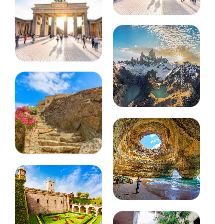Visiting the Camargue: 12 must-sees and must-dos
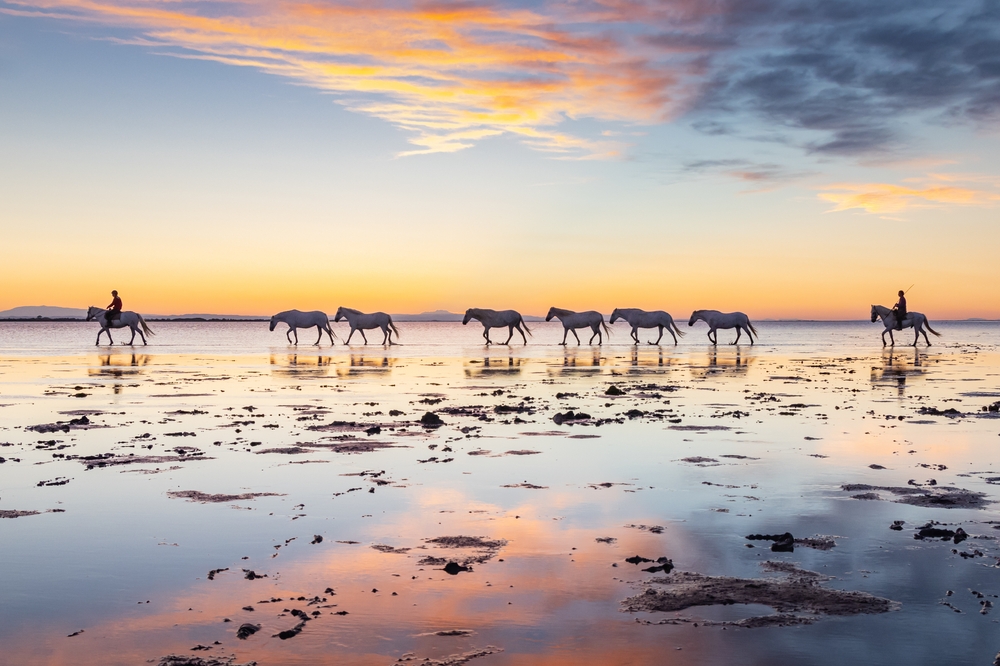
A wild region between Provence and Languedoc, the Camargue reveals its wonders between salt marshes, rice fields and unspoilt beaches. From the arenas of Arles to the pink flamingos of the Pont de Gau ornithological park, the ramparts of Aigues-Mortes and the white horses galloping freely, every corner of this authentic land reveals a unique experience. Here are 12 must-see places to visit in the Camargue, so you don’t miss a thing of this exceptional region of southern France.
200 audioguided tours for cities all around the world
Download1. The Arles Arena
The Arles arenas are one of the best-preserved Roman amphitheatres in the world. Built at the end of the 1st century AD, they could hold up to 20,000 spectators. Even today, these arenas host bullfights and Camargue races, perpetuating an age-old tradition. The building is easy to visit from the centre of Arles, making it an ideal base for touring the Camargue.
Download the audio-guided tour to discover Arles on foot and on your own
Explore the treasures of Arles with our 3.7km Navaway guided itinerary, which will take you through 18 remarkable sites in 1? hours. From the Place de la République to the Constantine Baths, via the Espace Van Gogh and the Roquette district, let us guide you through this city with 2,000 years of history.
Also in the Arles guide :
- 20 not-to-be-missed excursions around Marseille
- The 9 most beautiful villages to discover around Nîmes
- The most beautiful villages around Marseille
2. The medieval town of Aigues-Mortes
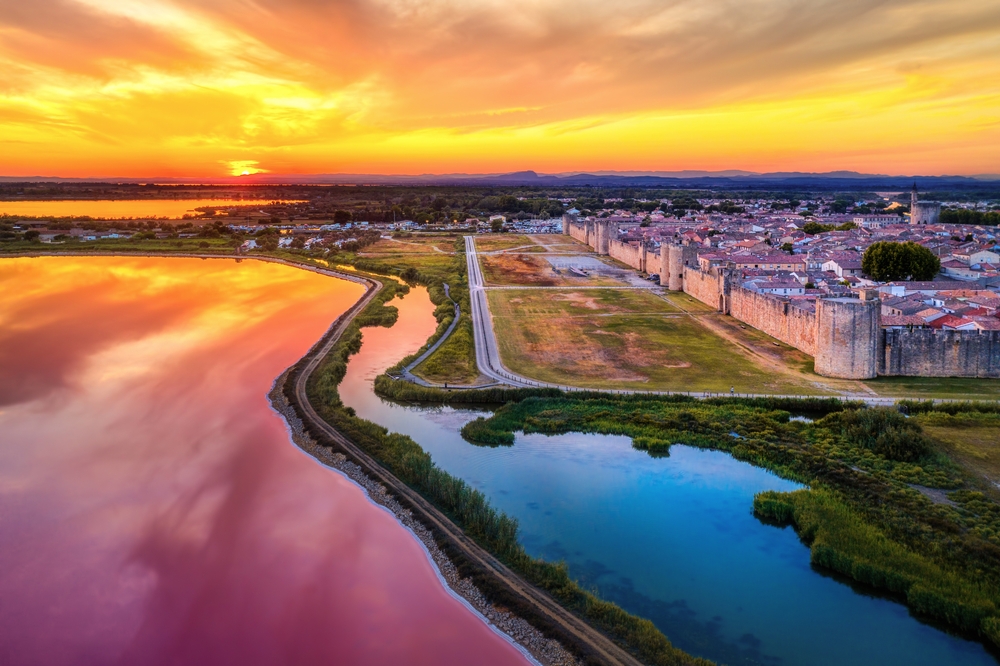
Founded in the 13th century by Saint Louis, Aigues-Mortes fascinates visitors with its perfectly preserved fortified walls. This medieval town, built in the salt marshes, offers an exceptional panorama of the pink landscapes of the Camargue from its ramparts. A walk along more than a kilometre and a half of ramparts reveals the Tour de Constance, a former military keep, and the surrounding salt marshes. Be sure to visit Avignon during your stay in the region, another medieval gem nearby.
3. The Camargue National Nature Reserve
The wild heart of the Camargue region, the national reserve extends over 13,000 hectares around the Etang du Vaccars. Created in 1927, it protects one of the largest marshes in France, renowned for its exceptional biodiversity. Signposted footpaths allow you to get up close and personal with the pink flamingos, which are particularly numerous in spring and late summer. This reserve is an essential sanctuary for visiting the Camargue and understanding its unique ecosystems.
4. Horse riding in the Camargue marshes
An authentic experience par excellence, horse riding reveals the wild beauty of the Camargue to the peaceful rhythm of the white Camargue horses. These mounts, perfectly suited to the vast expanses of marshland, allow you to get up close and personal with the local fauna: pink flamingos, black bulls and herons in their natural habitat. Beginners and experienced riders alike will find something to suit them among the many manades offering rides lasting from an hour to a full day. The Cavalry School at Domaine de la Palissade (36 Chemin de la plage de Pimanson, 13129 Salin de Giraud, rated 4.6/5 on Google out of 289 reviews) offers exceptional rides.
5. Les Saintes-Maries-de-la-Mer, spiritual capital
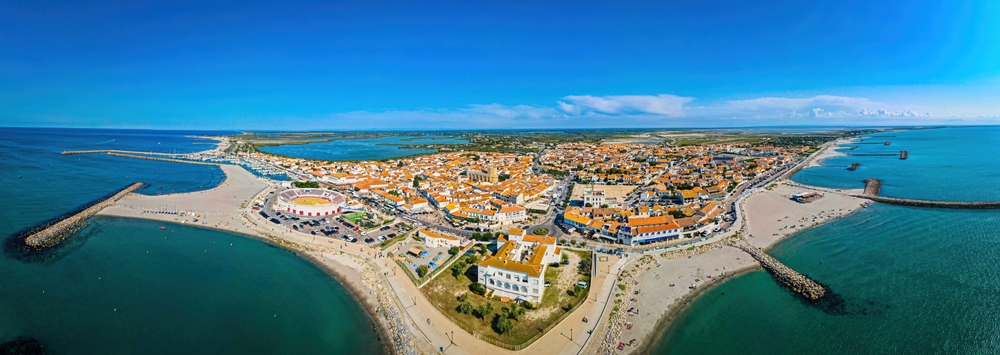
An emblematic village at the heart of Camargue traditions, Les Saintes-Maries-de-la-Mer attracts pilgrims and visitors alike with its fortified church and gypsy celebrations. The church of Notre-Dame-de-la-Mer is home to the statue of Sainte Sara, venerated during the pilgrimages on 24-25 May and 22 October. The Baroncelli Museum recounts the local history and customs of the Camargue. The picturesque port and nearby beaches are the perfect complement to this cultural discovery in the heart of the Camargue.
6. Pont de Gau ornithological park
A major site for observing pink flamingos in their natural habitat, the Pont de Gau ornithological park (RD 570 Lieu dit Pont de Gau, 13460 Saintes-Maries-de-la-Mer, rated 4.1/5 on Google out of 3,456 reviews) covers 60 hectares of marshes and reedbeds. There are special paths and observation points to help you discover the fauna of the Camargue. Open all year round, you can observe flamingos, herons, egrets and many other emblematic species, depending on the season. Allow half a day and don’t forget your binoculars to make the most of the spectacle.
7. The Marais du Vigueirat nature reserve
Just outside Arles, this 1,200-hectare reserve offers a comprehensive overview of the Camargue’s biodiversity. More than 300 species of birds take refuge here, and can be observed from the signposted paths and observatories. The Marais du Vigueirat (Chemin de l’Etourneau, 13104 Mas-Thibert, rated 4.3/5 on Google out of 1,543 reviews) offers guided tours and educational discoveries to help visitors understand how these protected wetlands, an essential part of the Camargue ecosystem, are managed.
8. The salt marshes of Salin-de-Giraud
The salt marshes of Salin-de-Giraud are a spectacular landscape of rosy hues, revealing an extraction process that goes back thousands of years. These basins of changing colours, from immaculate white to intense pink depending on the concentration of algae, stretch over several hectares near the Rhône delta. The best time to admire the pink hues is from May to September. Guided tours provide an insight into this age-old know-how, while observing the pink flamingos that frequent these salty areas.
9. The Fangassier pond
The only pink flamingo breeding site in France, the Etang du Fangassier is an exceptional ornithological sanctuary. This protected area, near Salin-de-Giraud, is home to nesting flamingos between April and July. Regulated access guarantees the species’ tranquillity during this crucial period. From marked trails or on guided outings, you can observe the flamingos in a way that respects this fragile ecosystem, a living testimony to the natural wealth of the Camargue.
10. The wild beaches of the Camargue
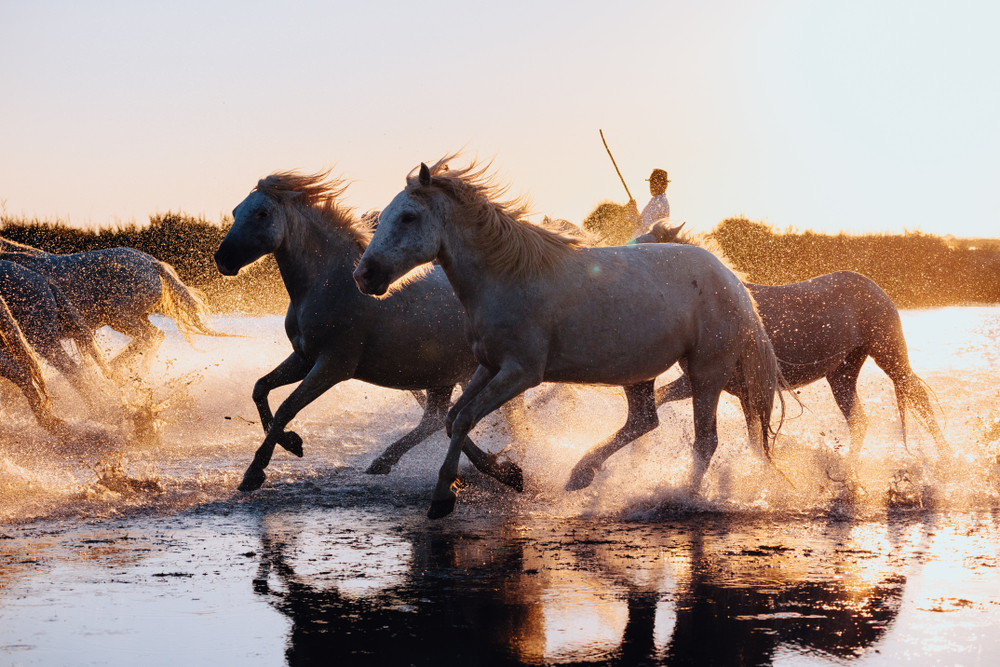
Preserved from mass tourism, the beaches of the Camargue offer wild stretches of golden sand and unspoilt nature. These protected areas, subject to regulations to preserve their fragile environment, stretch mainly between Le Grau-du-Roi and Salin-de-Giraud.
Piemanson beach
The last wild Mediterranean beach accessible by car, Piemanson near Salin-de-Giraud stretches over several kilometres of fine sand. Regulated to preserve its ecosystem, it remains a haven of peace for lovers of authentic nature.
Beauduc beach
A legendary beach in the commune of Arles, Beauduc has a wild and unspoilt character. The more rustic access rewards you with a feeling of total isolation, ideal for kitesurfing enthusiasts and families looking for tranquillity.
The Espiguette beach
A huge stretch of fine sand bordered by protected dunes, l’Espiguette (30240 Le Grau-du-Roi, rated 4.4/5 on Google out of 8,234 reviews) stretches for almost 10 kilometres. This protected natural area offers a landscape that is unique in France, where the dunes, several metres high, are home to specific flora and fauna.
11. Domaine de la Palissade
The only public access to the undammed natural environments of the Rhône delta, the Domaine de la Palissade (36 Chemin de la plage de Pimanson, 13129 Salin de Giraud, rated 4.2/5 on Google out of 1,876 reviews) reveals an authentic and wild Camargue. Signposted trails wind through this unspoilt area, where pink flamingos, Camargue bulls and white horses roam freely. Guided tours explain how this exceptional wetland is managed.
12. The emblematic lighthouses of the Camargue
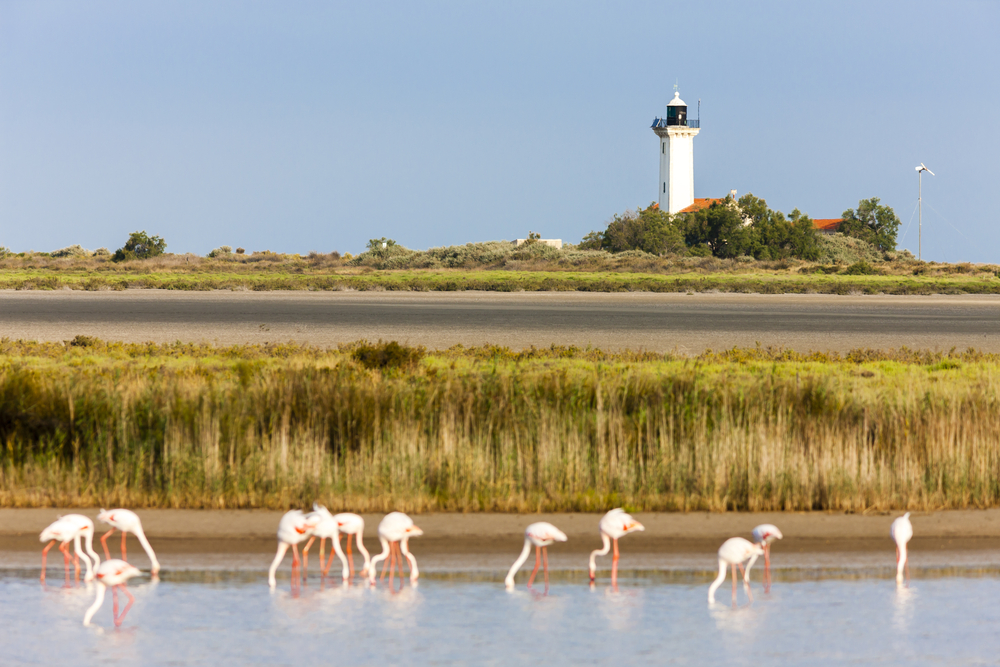
Silent witnesses to the maritime history of the Camargue, the Gacholle, Beauduc and Faraman lighthouses dot the wild coastline. The Gacholle lighthouse (Voie Communale du Fangassier, 13129 Arles, rated 4.3/5 on Google out of 542 reviews), built in 1882, marks the entrance to the Regional Nature Park. These isolated sites can be reached on foot or by bike, offering exceptional panoramic views of the Mediterranean coast and surrounding lagoons. Bring suitable footwear and water, especially in summer, for these rejuvenating excursions.
Discovering these 12 must-sees reveals the full wealth of the Camargue, a unique territory where wild nature and age-old traditions combine harmoniously. From the Roman monuments of Arles to the unspoilt beaches, from flamingo watching to horse riding, each experience enriches your understanding of this exceptional ecosystem. Let the Navaway d’Arles itinerary guide you through this gateway to the wonders of the Camargue, and extend your stay by exploring the nature reserves and living traditions of this authentic land in the south of France.
FAQ about the Camargue
When is the best time to visit the Camargue?
Spring and autumn offer ideal conditions for visiting the Camargue. From April to June and from September to October, the temperatures are pleasant, the flamingos particularly numerous, and the tourist numbers more measured. Summer is also suitable, but be sure to bring sun protection and hydration for outdoor activities.
How many days does it take to visit the Camargue?
Three to four days are all it takes to discover the main sites of the Camargue: Arles and its Roman monuments, the nature reserves, a horse ride, Les Saintes-Maries-de-la-Mer and Aigues-Mortes. A week offers the opportunity to explore each of these sites in greater depth, and to explore the more confidential sites.
Where to stay to visit the Camargue?
Arles is an ideal base from which to explore, with its historic heritage and proximity to natural sites. Les Saintes-Maries-de-la-Mer offers a total immersion in the Camargue atmosphere, while Aigues-Mortes seduces with its medieval setting. Le Grau-du-Roi is perfect for families, with its beaches and water sports.
How can you spot pink flamingos in the Camargue?
There are several sites where you can go birdwatching: the Pont de Gau ornithological park for an easier approach, the Etang du Fangassier to observe them in their breeding grounds, and the Marais du Vigueirat for a wider discovery of Camargue birdlife. Binoculars recommended and observation distances must be respected.
Can you visit the Camargue without a car?
Possible but limited. Arles can be reached by train from Marseille, Montpellier or Avignon. Buses connect the main towns, but limited timetables make it difficult to explore. Hiring electric bikes in Arles or Les Saintes-Maries-de-la-Mer is an environmentally-friendly way to discover certain natural sites.
200 audioguided tours for cities all around the world
Download